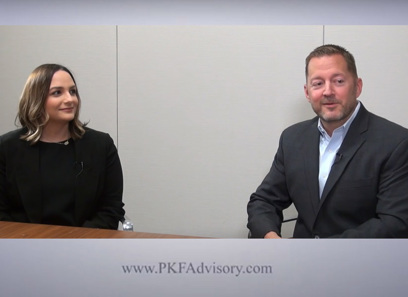Methods to Grasp Understanding Purchase Price Allocation
Methods to Grasp Understanding Purchase Price Allocation
Blog Article
Secret Insights Into Comprehending Acquisition Rate Allowance in Mergers and Acquisitions
The process of Acquisition Price Allotment (PPA) in mergers and acquisitions works as an important structure for precisely analyzing the fair worth of obtained assets and obligations. As organizations browse the complexities of valuation methods and regulative standards, the implications extend beyond simple conformity; they influence economic declarations, tax placements, and stakeholder assumptions. Recognizing these dynamics is crucial for ensuring openness and promoting trust fund in the newly formed entity. However, the subtleties of PPA can usually existing challenges that advantage more detailed examination, particularly regarding their long-term results on monetary security and efficiency.
Definition of Acquisition Cost Allowance
Acquisition price allotment (PPA) plays an important duty in mergings and purchases, as it includes the process of dispersing the complete acquisition rate amongst the various identifiable properties and liabilities of the gotten firm. This organized method is necessary for properly reflecting the reasonable value of each possession and obligation, making certain that stakeholders have a clear understanding of the deal's economic ramifications.
The PPA procedure normally entails identifying and valuing tangible and intangible possessions, such as home, devices, copyright, and client connections. Liabilities, including financial debts and contingent responsibilities, should likewise be assessed to supply an extensive view of the acquired entity's monetary standing. The appropriation of the purchase rate is frequently assisted by relevant accounting standards, such as the Financial Accountancy Criteria Board (FASB) guidelines, which determine the methods for reasonable worth dimension.
Ultimately, a well-executed PPA not just develops a transparent monetary structure for the getting firm but likewise supports future economic reporting and tax analyses. As a result, understanding the interpretation and mechanics of PPA is necessary for specialists associated with the M&A landscape, as it lays the foundation for informed decision-making and strategic preparation.
Relevance of PPA in M&A
The relevance of purchase price allocation (PPA) in mergings and acquisitions extends past plain compliance with bookkeeping requirements; it works as a pivotal aspect in guaranteeing exact monetary representation and strategic post-merger assimilation. PPA provides a structure for valuing obtained possessions and obligations, enabling stakeholders to get a more clear understanding of the purchase's effect on the economic declarations of the getting company.
Appropriately carried out PPA helps in identifying and measuring intangible properties, such as consumer partnerships and copyright, which are often important to the success of the combined entity. This allowance procedure not only affects monetary coverage however likewise has tax obligation effects that can influence the total financial wellness of the joined organization.
Additionally, PPA plays a critical function in analyzing efficiency post-merger. By establishing a clear standard of possession values, business can much more properly determine the success of assimilation approaches and operational efficiencies. This, consequently, supports educated decision-making and calculated preparation for future development. Eventually, a well-conducted PPA fosters openness and builds trust amongst stakeholders, therefore enhancing the total success of the M&An undertaking. Purchase Price Allocation in Mergers and Acquisitions.
Valuation Approaches Made Use Of in PPA
Precise evaluation techniques are integral to the purchase price allotment procedure, as they identify exactly how the total acquisition expense is dispersed among the recognizable assets and liabilities of the gotten entity. Numerous evaluation techniques are employed to attain this, with the most typical being the Expense Strategy, Market Technique, and Earnings Technique.
The Expense Strategy estimates the worth based upon the expense to replace a possession, readjusting for depreciation and Purchase Price Allocation in Mergers and Acquisitions obsolescence. This method is especially helpful for tangible assets and provides a simple appraisal structure.
On the other hand, the marketplace Approach relies upon similar market deals to analyze the worth of comparable assets, providing insights based upon actual sales - Purchase Price Allocation. This method is beneficial in energetic markets where similar sales data is offered

Choosing the ideal valuation approach is vital, as it directly affects just how goodwill and various other abstract possessions are recognized and gauged in the economic declarations post-acquisition. Each method has its advantages and limitations, requiring cautious factor to consider by the assessment professionals involved.
Regulative Considerations
While browsing the complexities of acquisition rate allowance, regulative considerations play a crucial duty in guaranteeing conformity with audit standards and lawful requirements. Understanding PPA Allocation. Entities included in mergings and procurements must comply with guidelines established forth by bodies such as the Financial Accountancy Specification Board (FASB) and the International Financial Coverage Criteria (IFRS) These standards dictate how possessions and obligations acquired in a deal needs to be gauged and identified
Governing frameworks require that business perform an extensive evaluation of reasonable worth analyses for recognizable abstract assets, goodwill, and contingent responsibilities. This procedure includes celebration extensive data to sustain the appraisals made throughout the allotment procedure, making sure openness and accuracy. Furthermore, governing examination might encompass the techniques utilized, requiring justification of chosen appraisal strategies to alleviate potential disagreements with tax authorities or auditors.

Influence On Financial Statements
Acquisition rate allocation substantially influences the economic statements of companies engaged in mergings and purchases. This procedure includes dispersing the complete purchase price amongst the gotten assets and responsibilities, affecting numerous economic metrics and overall economic health.
The allocation affects the equilibrium sheet by acknowledging intangible properties, such as brand name value or client relationships, which may not have been formerly reported. These possessions can boost the business's possession base, but they additionally necessitate succeeding impairment testing, which could cause volatility in future earnings if the possessions are deemed impaired.
Furthermore, the income statement is straight affected as the allowance figures out the quantity of goodwill identified. Goodwill undergoes yearly disability testing and can influence web income considerably. The raised amortization expenses associated with the determined abstract assets may also decrease earnings in the preliminary years post-acquisition.
Additionally, exact purchase cost allocation is essential for tax purposes, influencing deferred tax obligation liabilities and future cash flows. In general, the implications of acquisition cost appropriation expand past immediate audit figures, shaping financier perceptions and potentially influencing stock rates. Comprehending this impact is essential for stakeholders involved in mergers and purchases.
Verdict
To conclude, Acquisition Rate Appropriation (PPA) offers as an essential process in mergers and procurements, making sure the reasonable assessment of both concrete and abstract properties. Its relevance reaches monetary coverage and stakeholder confidence, while the selection of appraisal techniques can considerably influence a good reputation recognition. Abiding by regulative requirements is vital for compliance and transparency. Ultimately, efficient execution of PPA adds to the total economic health and success of the consolidated entity.
Report this page